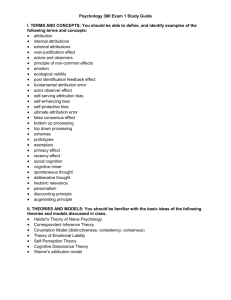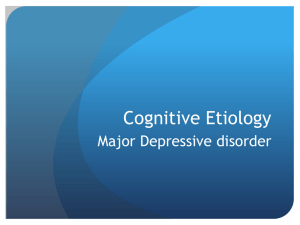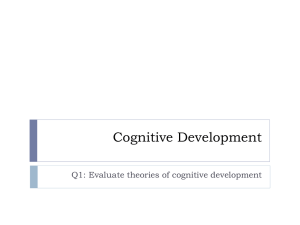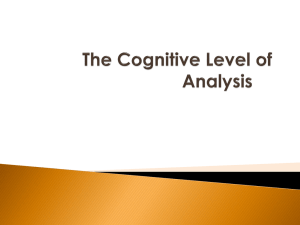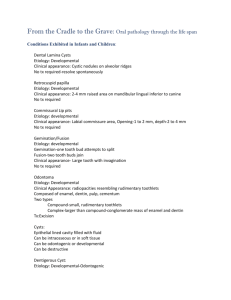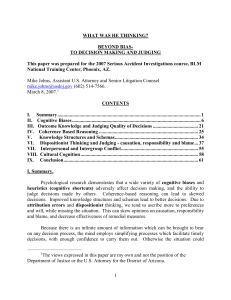Midterm Study Guide
advertisement
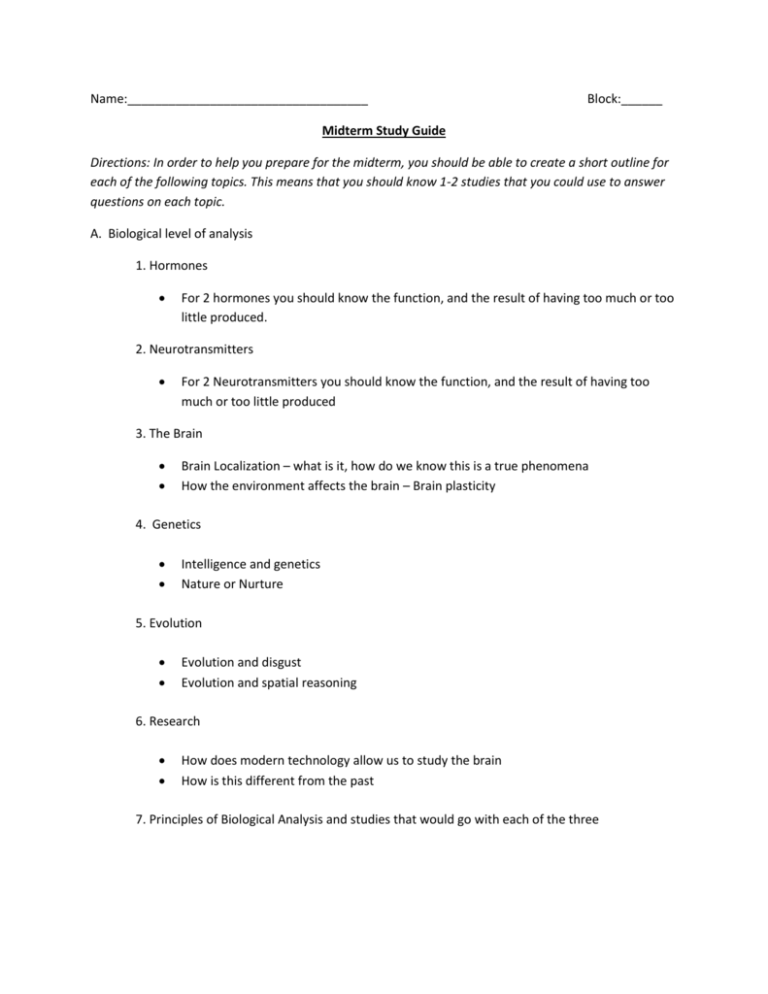
Name:___________________________________ Block:______ Midterm Study Guide Directions: In order to help you prepare for the midterm, you should be able to create a short outline for each of the following topics. This means that you should know 1-2 studies that you could use to answer questions on each topic. A. Biological level of analysis 1. Hormones For 2 hormones you should know the function, and the result of having too much or too little produced. 2. Neurotransmitters For 2 Neurotransmitters you should know the function, and the result of having too much or too little produced 3. The Brain Brain Localization – what is it, how do we know this is a true phenomena How the environment affects the brain – Brain plasticity 4. Genetics Intelligence and genetics Nature or Nurture 5. Evolution Evolution and disgust Evolution and spatial reasoning 6. Research How does modern technology allow us to study the brain How is this different from the past 7. Principles of Biological Analysis and studies that would go with each of the three B. Cognitive level of analysis 1. Models of Memory Give an example of how each model works, and a study to support How are the models of memory examples of brain localization 2. Schemas What are schemas, how do we know we have them How reliable are schemas How does culture affect our schemas 3. Reliability of Memory 4. Flashbulb Memories How are they formed/ Why are they formed 5. How the environment can affect a cognitive process (Think Clive Wearing/ Culture and Schemas) 6. How emotion affects a cognitive process LeDoux 2 Factor Theory Flashbulb Memories 7. Learning Different ways children may learn How culture affects the way in which we learn and remember information 8. Principles of Cognitive Analysis and studies that would go with each of the three C. Socio-Cultural Analysis 1. Culture Hofstede’s cultural dimensions Etic vs Emic Cultural schemas Cultural norms Anthropologist Mead (1935) – three cultures in New Guinea (gender norms) 2. Attribution Types of attribution (situational vs dispositional) Two errors in attribution (fundamental attribution error, self-serving bias, or modestybias) 3. Social Identity Theory Define the theory Social categorization In-group vs out-group Tajfel’s Kandinsky and Klee Sherif’s Robber’s Cave 4. Stereotyping 5. Moscovici – Social Representations Reasons for stereotyping ( social categorization, grain of truth hypothesis, illusory correlation, confirmation bias) Results of stereotyping on the individual Social Learning Theory Define the theory Factors involved in social learning (attention, retention, motor reproduction, motivation) Factors of motivation (consistency, identification with model, reward/punishment, liking the model) Research on social learning Social learning in real life – (Heusmann and Eron (1986) or Charlton, Gunter, Hannan 2002) Sabido method 6. Compliance Cialdini – compliance techniques Focus on: Reciprocity: door-in-the-face Focus on: Commitment: foot-in-the-door and low-balling Focus on Authority: Milgram study Compliance in real life – hazing 7. Conformity Asch paradigm Criticisms of Asch (Friend et al, Moscovici and Lage, Hogg and Vaughan) Sherif’s autokinetic effect (experiment done by having participants describe the movement of a small light in a room) Factors influencing conformity (Group size, unanimity, confidence, self-esteem, groupthink) Cultural aspects of conformity D. Abnormal Psychology 1. Concepts of normality and abnormality (Jahoda and Rosenhan and Seligman) Know the criteria for each 2. Evaluation of the mental health criteria 3. Diagnosis of psychological disorder How do we diagnose mental disorders in the United States The ABCS of diagnosis Validity and reliability of diagnosis (Rosenhan study) Ethical considerations in diagnosis (stigmatization, self-fulfilling prophecy) Bias in diagnosis (Racial/Ethnic, Confirmation bias) Cultural considerations in diagnosis (culture bound syndromes, reporting bias, affective vs somatic symptoms) – Use Hofestede’s cultural dimensions How can doctors avoid cultural bias 4. Abnormal Disorder – Affective Disorder: Depression Etiology (Biological, Cognitive, and Socio-cultural) Gender and cultural considerations/differences Treatment for each etiology 5. Anxiety Disorder: PTSD Etiology (Biological, Cognitive, and Socio-cultural) Gender and cultural considerations/differences Treatment for each etiology 6. Eating disorder: Bulimia Etiology (Biological, Cognitive, and Socio-cultural) Gender and cultural considerations/differences Treatment for each etiology 7. Treatment Options Cultural Considerations in treatment Eclectic approaches How to measure effectiveness of treatment E. Psychology of Human Relationships 1. Pro-Social Behavior Biological causes of Altruism (Kin Selection : Dawkins, Madison/ Reciprocal: Axelrod and Hamilton) Psychological causes of Altruism (Lerner and Lichtman, Negative-State-Relief Model Schaller and Cialdini/ Empathy-Altruism Model Batson Carol experiment) Bystander Effect (Kitty-Genovese Case, Latane and Darley, Diffusion of Responsibility, Pluralistic Ignorance, The Good Samaritan) Arousal-Cost-Reward Model – the role it plays in a person’s decision to act altruistically or as a bystander How cultural and social norms play a role in a person acting as a bystander or altruistically 2. Human Interpersonal Relationships Define relationships Triangle of love Theory Biological causes of attraction and attachment Cognitive causes of attraction and attachment Socio-cultural causes of attraction and attachment Maintaining relationships (communication, different communication styles, what men and women expect out of relationships) Why do relationships end or change 3. Violence What is violence Biological causes of violence Cognitive causes of violence Socio-cultural causes of violence Definition of bullying and causes of bullying Effects of bullying on the individual Ways to reduce or end bullying
